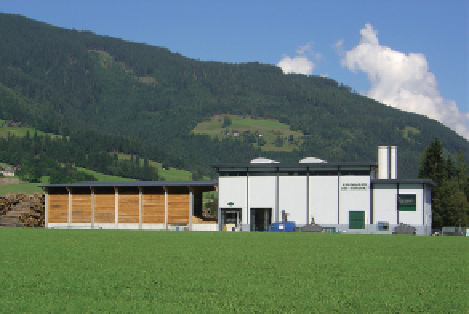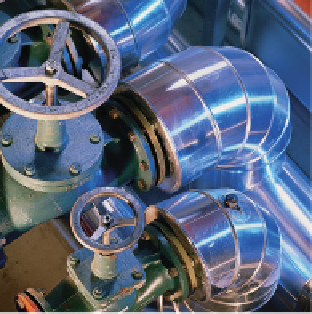Environmental Engineering Reference
In-Depth Information
Figure 12.11
The Altenmarkt biomass heating plant in Austria and district heat distributors.
Source: Salzburg AG.
techniques and have stricter conditions on emissions. This ensures that combustion
gases emit fewer harmful substances.
Electricity generation is another important application of biomass. Centralized
systems that are used exclusively to generate electricity are called power plants.
Biomass power plants function in a similar way to coal-fi red power plants. The fuels
used include wood residue, wood shavings and straw. A steam boiler burns the
biomass and produces steam that drives a steam turbine and an electric generator.
The principle of steam power plants is explained in the section on parabolic trough
power plants in Chapter 7.
Compared to photovoltaic systems and wind turbines, electricity generated by
biomass plants is not dependant on prevailing weather conditions. Biomass fuels
are optimal for storage and can be used as and when needed. This makes biomass
power plants a viable supplement to other renewable energy plants. They can guar-
antee electricity supply in situations when there is little wind or sun available at the
same time.
In contrast to coal-fi red plants that can output more than 1000 megawatts of power,
biomass plants have a considerably lower output in the order of 10 to 20 megawatts.
The use of biomass fuels is one of the main reasons for this. Biomass fuels usually
come from the region where the particular power plant is located. If the output of
the plant is too high, some of the biomass then has to be supplied from sources
much further away.
Numerous new biomass power plants have recently been built all over the world.
One example is the Königs Wusterhausen plant near Berlin, Germany (Figure
12.12). This power plant has an output of 20 megawatts and with 160 million kilo-
watt hours per year can cover the energy demands of around 50000 households.
For fuel it uses 120000 tons of waste and wood residues from the Berlin region
annually. The effi ciency of this biomass plant is around 35%.


